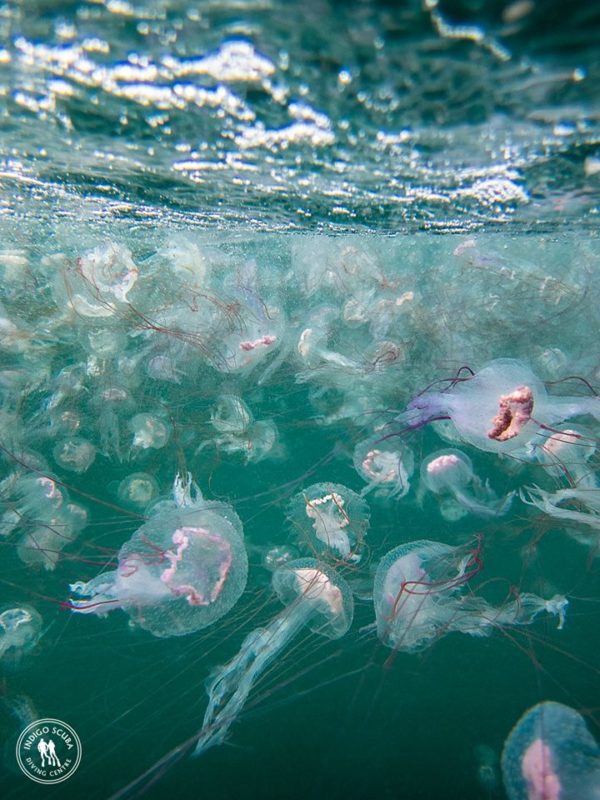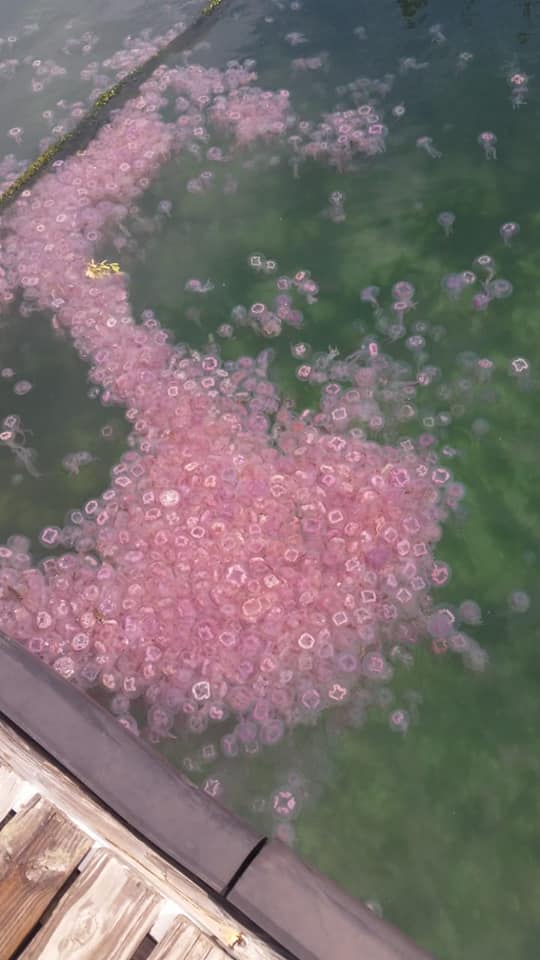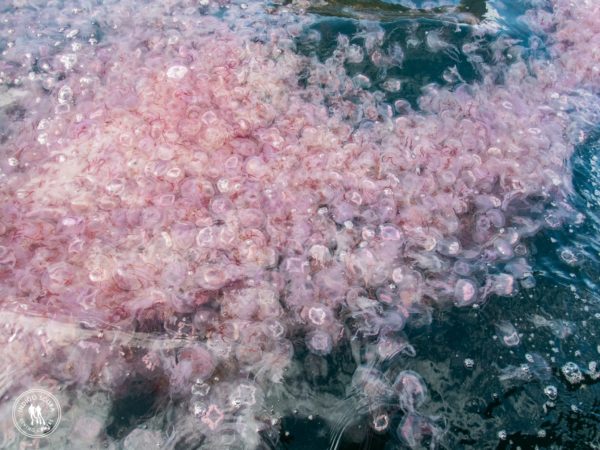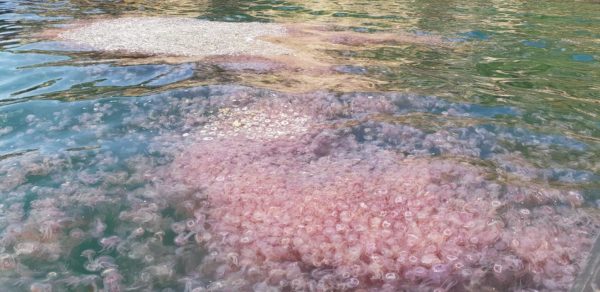Huge numbers of pink-coloured jellyfish have made their way into the shallower waters and harbours in Gordon’s Bay and the larger False Bay area, and locals are being cautioned to be aware that these cute and harmless-looking ocean creatures can cause painful stings.
We spoke to Professor Mark Gibbons from the Department of Biodiversity and Conservation Biology at the University of the Western Cape, who shed some light on exactly what species of jellyfish is populating our local waters.
“The species is Pelagia noctiluca, aka mauve stinger. It gives off light when disturbed, visible at night. Its sting can be painful. The species is holopelagic – meaning that unlike most jellies, there is no stage that lives as a polyp on the seabed. The species spends its entire life floating in the sea. The pink/purple crescent-shaped things that can be seen through the transparent bell are gonads. Animals are either male or female,” says Professor Gibbons.

A closer look at the gathering jellyfish.
For weeks locals have been noticing large numbers of these “mauve stingers” forming in harbours and even affecting swimming activities along False Bay.
Open water swimmer Piet Badenhorst says his latest swim session was recently interrupted by hordes of jellyfish and after a number of painful stings he managed to make it out of the water.

“Swarms like this are often seen and they result from the actions of winds, tides and currents: populations live offshore and are moved onshore by winds etc and get concentrated in bays. They cause HUGE problem elsewhere in the world. Their numbers around RSA cannot at this stage be blamed on anything and they appear to be normal for this time of year. Animals are carnivorous and will eat small goggas in the plankton with them,” says Gibbons.

While the marine creatures remain in these areas close to the shoreline, locals are cautioned not to swim where there are large numbers of jellyfish, and Professor Gibbons has some advice on effectively treating jelly stings.
“If they see lots in the water stay out. One or two may not be a problem but as different people react differently to bee stings, so it is for jellies. If they do get stung, the trick is to rinse the site with vinegar, scrape tentacles off with a credit card and then pour hot hot hot water on the sting to try and denature the toxin. Pee is useless,” says Professor Gibbons.
Also read: Thousands of Jellyfish swarm Gordons Bay
Pictures: Indigo Scuba Club/Facebook/Kita Leigh






